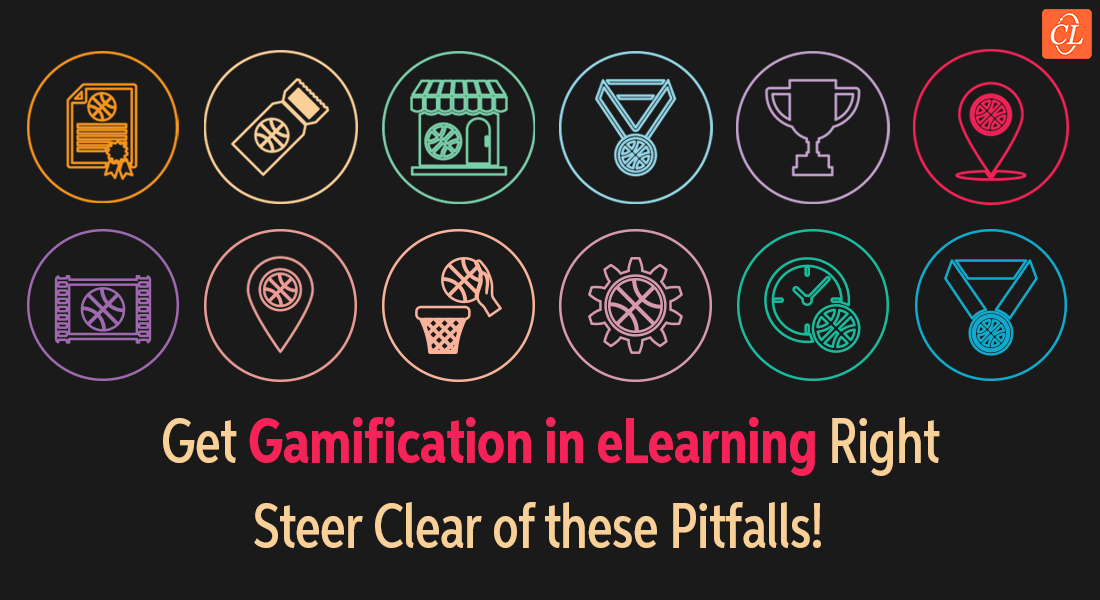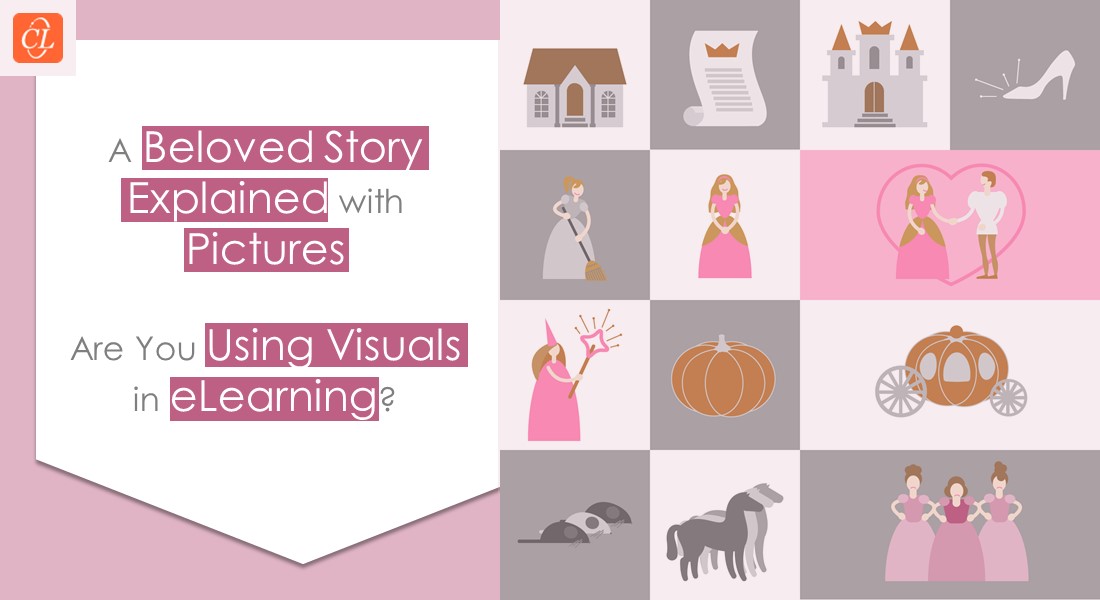4 Common Pitfalls to Avoid in Gamification of eLearning Courses

Gamification has revolutionized the landscape of eLearning by significantly enhancing engagement, especially among Generation Z and late millennials. Games provide a dynamic and interactive platform where adult learners can delve into complex subjects, hone critical thinking skills, and collaborate effectively with peers. Leveraging intrinsic motivation embedded within gaming dynamics, organizations can empower adults to drive their own learning and achieve professional development milestones.
However, despite its benefits, there are common pitfalls in gamified eLearning that can hinder its effectiveness. Addressing these pitfalls is crucial to ensuring a productive eLearning experience.
→ Download eBook: Instructional Design Strategies to Design Engaging eLearning Courses
Here’s what the blog covers:
- What is Gamification?
- In Which Training Types Gamification Can be Used?
- What are the Common Pitfalls in Gamification and How to Avoid Them?
What is Gamification?
Gamification is using game elements, mechanics, aesthetics, and game thinking in “conventional” learning activities to engage learners, motivate action, and promote learning. Gamification can be used in pre-training, during training, and post-training depending on your course type and the approach it follows.

In Which Training Types Gamification Can be Used?
- Onboarding
- Sales Training
- Technical Skill Development Training
- Product Training
- Software Training
- Compliance Training
- Soft Skill Development Training
- Safety Training
- Leadership Training
What are the Common Pitfalls in Gamification and How to Avoid Them?
Are You Looking to Gamify Your eLearning Courses?
Watch out for these common pitfalls to ensure a seamless gamified eLearning experience:
- Gamification for the sake of it, without a clear strategy
- Lack of Visual Appeal
- Complicated game elements/game mechanics being used
- Rewards being prioritized over learning objectives
Read on to understand how you can avoid these pitfalls.
1. Gamification for the sake of it, without a clear strategy
Gamification is indeed an excellent strategy to implement in your eLearning courses only when you have a clear vision of your learning goals. Using gamification for the sake of it will only deviate your eLearning courses from your organization’s learning objectives. Every method whether it’s gamification or anything else requires a well-thought strategy to impactfully function. A lack of clear strategy can cause your development efforts to turn useless and make your eLearning courses vague.
Solution:
Ensure your learning goals are sorted before you apply gamification within your eLearning courses. Boosting engagement in training in general, changing the behavior of your employees, or boosting sales can be some of the learning objectives an organization might look forward to. Gamification should only be used if it supports your eLearning course structure and its learning objectives, or else, look out for other relevant strategies such as microlearning or scenario-based learning.
2. Lack of Visual Appeal
Visuals of your eLearning course can at times lay the foundation for other strategies like gamification to be used at their best. When you only include game elements, but your course lacks a visual appeal to support those elements, the overall course loses its credibility. For example, assume that you added game elements like levels, reward points, and leaderboards to your sales training program but the course doesn’t have any sort of interactive and engaging visuals, rather, only texts and still images. Your employees will lose their motivation to complete or even actively participate in these training sessions due to the lack of a visual and interactive appeal.
Solution:
Make your eLearning gamified courses, visually appealing with the help of animated graphics, interactive level designs, and relatable customized characters/avatars. To facilitate learning with the help of gamification, visuals can often act as a stimulator. Having a clear idea of what motivates and engages your employees will help you to add relevant visuals to your gamified course.
Consider the above example, but build your course around a visually attractive virtual environment. In this virtual environment, a sales employee is managing a store, where he/she has to interact with different customers entering the store. Their conversations will be shown alongside their avatars in chat bubbles and avatars show expressions according to the conversation’s flow. The conversation will either lead to a successful sale or the customer walking off, depending on your choice of words and the actions you make. This way, learners can feel directly involved in their respective sales training sessions.

3. Complicated game elements/game mechanics being used
Apart from simple straightforward game elements, there are various complex game elements as well, such as hand-eye coordination enhancement, reaction time improvisations, human psychology integration, etc. Organizations can sometimes get confused and add these complicated game elements thinking it would engage the learners even more, but it backfires. Employees who are not part-time gamers or don’t necessarily consider themselves skilled gamers, can lose their engagement in a nick of time. Complicated game elements can also mess up the primary approach of your eLearning courses, i.e learning, and not gaming.
Solution:
Keeping things simple and sober is probably the catch here, because your eLearning courses are not professional gaming tournaments. After your strategy is finalized, including simple game elements to enhance learner engagement and motivation, while making things fun and exciting is the main focus behind the gamification of your eLearning courses. The elements like basic levels, completion rewards, mid-course assessment points, and skill badges should make up for the simple game elements that can be used. Complex game elements should generally be avoided or only be used under certain conditions to meet specific requirements or else it overwhelms the learners and makes them lose focus.

Instructional Design Strategies to Design Engaging eLearning Courses
Design Learner-Centric eLearning
- Importance of ID Strategies in eLearning
- Parameters to Select the Right ID Strategy
- ID Strategies for Effective Results
- Case Studies
4. Rewards being prioritized over learning objectives
Rewards are often considered the primary aspect or element of gamification that drives the most learner engagement. Rewards provide a sense of accomplishment to the employees and motivate them to work more efficiently and produce even better results. But, rewarding anyone for little to non-essential things such as participation or carrying out a side activity that is not relevant to the main course, can reduce the impact of rewards on a generalized basis. It’s a common saying that achievements taste best when they are earned, and not just given. Thus, giving away rewards or points without successfully achieving your learning outcomes, can lead to employees misunderstanding the objectives of the courses which will hamper their productivity, and waste their time.
Solution:
As we discussed earlier in point 3, that game elements should be kept simple, the same goes with rewards. Keeping the rewards simple, and specific to the actions or achievements will result in the success of your eLearning courses because it will help your employees earn the rewards, not just receive them. Awarding them for completing a course with a specific badge along with their certificate, or just incentivizing them for any extra sales they make can be considered some viable rewards. It will make your employees accomplish your learning goals faster because you are rewarding them only for the tasks that directly support your training objectives. In the end, your rewards should be an asset to recognize your achievements, rather than being the sole reason to accomplish a certain task or activity.
Here's a quick video highlighting the importance of learning objectives to help you design your gamified courses better.
Parting Thoughts!
Gamification can significantly impact the learning experience of your employees positively or negatively, depending on how you use it, and how much clarity you have regarding its basic concepts. Avoiding the pitfalls mentioned above can lead to a successful gamification strategy to be implemented in your eLearning courses.
Interested to know more about instructional design strategies that help in designing engaging eLearning courses? Then this eBook is all you need! Learn how to craft compelling narratives, design visually appealing content, and incorporate multimedia for maximum engagement. Elevate your eLearning game with practical tips and strategies tailored to enhance learning retention and motivation.
Editor’s Note: This post was originally published on September 28, 2022 and has been updated for comprehensiveness.





